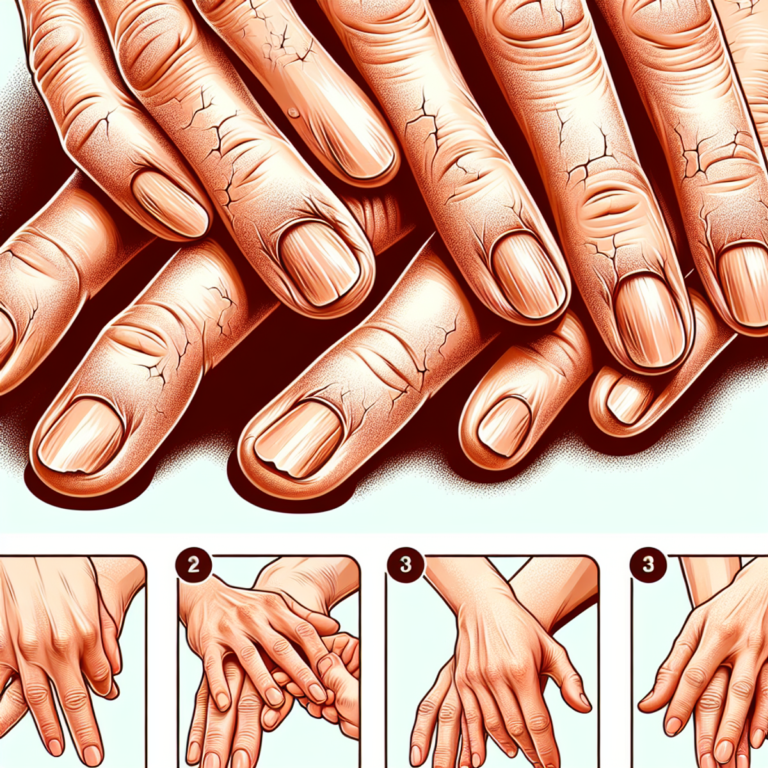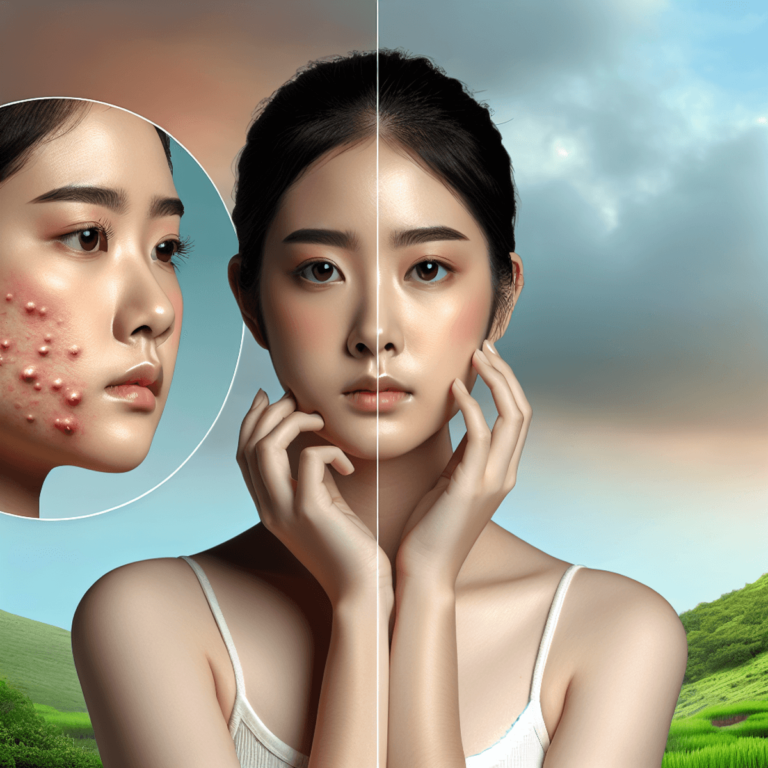How to heal pimples

Introduction
Dealing with pimples goes beyond just treating the visible spots – it’s about understanding your skin and implementing effective solutions for both immediate relief and long-term care. This comprehensive guide walks you through proven methods to heal pimples and minimize scarring, backed by dermatological research and practical experience.
You’ll discover:
- The science behind different types of pimples – from pesky whiteheads to stubborn cystic acne
- Quick-relief techniques for active breakouts that actually work
- Professional treatments and home remedies for lasting results
- Strategies to prevent and fade pimple scars
- Expert tips for maintaining clear, healthy skin
Whether you’re battling occasional spots or managing persistent acne, this guide equips you with the knowledge to make informed decisions about your skincare routine. We’ll explore both conventional treatments and natural remedies, helping you build a personalized approach that suits your skin type and concerns.
Let’s dive into the essential steps to achieve clearer, healthier skin and boost your confidence along the way.
Understanding Pimples and Pimple Scars
Pimples develop when hair follicles become clogged with oil, dead skin cells, and bacteria. These blockages create small, inflamed bumps that can appear anywhere on your body, though they’re most common on the face, chest, and back.
Common Types of Pimples:
- Whiteheads: Closed comedones that appear as small, flesh-colored bumps
- Blackheads: Open comedones with dark appearances due to oxidation
- Papules: Small, red, tender bumps without heads
- Pustules: Red, inflamed spots with white or yellowish centers
- Cystic Acne: Deep, painful lumps filled with pus that form beneath the skin
Your skin produces sebum (natural oil) through sebaceous glands. When these glands create excess oil, it mixes with dead skin cells and bacteria, blocking pores and triggering inflammation – the root cause of pimple formation.
Types of Acne Scars:
- Ice Pick Scars: Deep, narrow indentations that look like small puncture marks
- Boxcar Scars: Round or oval depressions with steep, defined edges
- Rolling Scars: Wide depressions with sloping edges, creating a wave-like appearance
- Hypertrophic Scars: Raised scars that sit above the skin’s surface
- Post-Inflammatory Hyperpigmentation: Dark spots left behind after pimples heal
Acne scars form when inflammation damages the skin’s collagen. The severity of scarring depends on several factors:
- Depth of the original breakout
- Your skin’s healing ability
- Genetics
- Sun exposure during healing
- Picking or popping pimples
Immediate Relief for Active Pimples
A proper cleansing routine is your first defense against active breakouts. Your skin needs gentle yet thorough cleansing to remove:
- Dead skin cells
- Excess sebum
- Bacteria
- Environmental pollutants
- Makeup residue
Choosing the Right Cleanser for Your Skin Type:
To effectively cleanse your skin, it’s essential to choose a face wash that suits your skin type. Here are some recommendations:
Oily Skin: Select gel-based or foaming cleansers with salicylic acid
Dry Skin: Use cream-based cleansers with hydrating ingredients
Sensitive Skin: Pick fragrance-free, hypoallergenic formulas
Combination Skin: Opt for balanced pH cleansers with mild ingredients
Essential Steps for Effective Cleansing:
- Wet your face with lukewarm water
- Apply a dime-sized amount of cleanser
- Massage in circular motions for 60 seconds
- Pay extra attention to the T-zone
- Rinse thoroughly with cool water
- Pat dry with a clean towel
Quick Relief Tips for Popped Pimples:
If you’ve already popped a pimple, here are some strategies to heal it and prevent scarring:
- Apply an ice cube wrapped in cloth for 1-2 minutes
- Use a spot treatment containing benzoyl peroxide
- Keep the area clean and moisturized
- Apply a hydrocolloid patch overnight
- Avoid touching or picking at the affected area
Remember to cleanse twice daily – morning and night. Double cleansing proves particularly effective for removing stubborn makeup and sunscreen in the evening. This method involves using an oil-based cleanser followed by a water-based formula, following the order of skin care for optimal results.
Topical Treatments for Pimples
Benzoyl peroxide and salicylic acid are two powerful ingredients in the fight against pimples. Let’s explore how these treatments work to clear your skin.
Benzoyl Peroxide: Your Antibacterial Ally
Benzoyl peroxide is a strong antibacterial agent that targets P. acnes bacteria, which are responsible for inflamed pimples. This ingredient creates an environment rich in oxygen where acne-causing bacteria cannot survive.
Application Guidelines:
- Start with a 2.5% concentration to minimize irritation
- Apply a thin layer to affected areas once daily
- Increase to twice daily if your skin tolerates it well
- Use white towels – benzoyl peroxide can bleach fabrics
- Wait 2-3 minutes before applying moisturizer
Pro tip: Instead of spot treating, apply benzoyl peroxide as a thin layer across all areas prone to acne. This will help prevent future breakouts.
Salicylic Acid: Your Pore-Clearing Expert
Salicylic acid goes deep into your pores and dissolves the “glue” that holds dead skin cells together. This beta-hydroxy acid (BHA) helps stop clogged pores, which can lead to breakouts.
Recommended Usage:
- Choose products with 0.5-2% concentration
- Apply to clean, dry skin
- Start by using it every other day
- Build up to twice daily use as your skin gets used to it
- Combine with non-comedogenic moisturizer
Best Practices:
- Don’t mix benzoyl peroxide and salicylic acid in the same application
- Use sunscreen during the day – BHAs can make your skin more sensitive to the sun
- Stop using if you experience excessive dryness
- Store products in a cool, dark place
For stubborn or deep pimples, alternate between using benzoyl peroxide in the morning and salicylic acid at night. This combination approach targets both bacteria and debris that clog pores while minimizing potential irritation to your skin.
It’s also essential to adopt a suitable skin care routine for oily skin, which often accompanies acne. Remember to patch test new products on a small area of your skin before applying them to your entire face. This will help you check for any negative reactions.
Additionally, understanding how these treatments work at a deeper level can provide valuable insights into their effectiveness. For instance, studies have shown that combining benzoyl peroxide and salicylic acid can yield significant improvements in acne treatment outcomes.
Retinoids: A Powerful Option Against Both Pimples and Scars
Retinoids are a game-changing treatment for both active pimples and stubborn scars. These vitamin A derivatives work at a cellular level to accelerate skin renewal and collagen production.
How Retinoids Transform Your Skin:
- Speed up cell turnover to prevent clogged pores
- Boost collagen production to fill in depressed scars
- Fade dark spots and post-inflammatory hyperpigmentation
- Balance skin tone and texture
Prescription Retinoids:
- Tretinoin (Retin-A)
- Adapalene
- Tazarotene
These prescription options offer potent formulations for severe acne and deep scarring. Your dermatologist can prescribe the appropriate strength based on your skin’s needs.
Over-the-Counter Options:
- Retinol
- Retinyl palmitate
- Granactive retinoid
These gentler alternatives suit sensitive skin types and provide gradual improvements with consistent use.
Application Tips:
- Start with a pea-sized amount for your entire face
- Use every third night initially
- Apply to clean, dry skin
- Wait 20 minutes before applying moisturizer
- Always use sunscreen during the day
Retinoids can cause initial dryness and peeling. These side effects typically subside within 4-6 weeks as your skin adjusts to the treatment. For best results, combine retinoids with a gentle skincare routine and sun protection.
Home Remedies for Quick Healing
Ice therapy is a powerful and cost-effective solution for treating active breakouts. Applying ice to inflamed pimples creates a vasoconstriction effect, reducing blood flow to the affected area. This natural remedy delivers three key benefits:
- Reduced Inflammation: A 1-2 minute ice application shrinks swollen tissues
- Pain Relief: The cold numbs nerve endings, minimizing discomfort
- Redness Control: Blood vessel constriction diminishes the angry red appearance
Application Method:
- Wrap ice in a clean cloth
- Press gently against the pimple for 1-2 minutes
- Remove for 5 minutes
- Repeat up to 3 times
Additional home remedies that speed up healing:
- Raw honey as a natural antibacterial spot treatment
- Green tea bags as anti-inflammatory compresses
- Diluted tea tree oil for its antimicrobial properties
These simple kitchen ingredients work alongside ice therapy to create a powerful healing arsenal for troubled skin.
Advanced Treatment Options for Persistent Acne or Severe Scarring
Cortisone injections offer a rapid solution for stubborn, inflamed pimples that resist traditional treatments. This medical procedure involves injecting a diluted corticosteroid directly into the affected area, delivering powerful anti-inflammatory benefits.
You might consider cortisone injections when:
- Your pimple is large, painful, and deeply embedded
- You have an important event within 48 hours
- Traditional treatments haven’t shown results after 1-2 weeks
- The breakout is causing significant emotional distress
The procedure takes just minutes in a dermatologist’s office, with results visible within 24-48 hours. The injection works by shrinking the inflamed tissue and reducing redness. While effective, this treatment requires professional administration and comes with specific guidelines:
- Limit treatments to 1-2 times per area
- Space treatments at least 6 weeks apart
- Use only for severe, isolated breakouts
- Combine with regular skincare routine for best results
The cost ranges from $50-150 per injection, varying by location and provider. Insurance might cover the treatment if deemed medically necessary.
Face Masks: A Complementary Approach to Treating Both Acne and Scarring
Face masks are powerful tools in your fight against acne and scarring. Different types of masks target specific skin issues:
Clay Masks
- Kaolin clay absorbs excess oil and draws out impurities
- Bentonite clay reduces inflammation and shrinks pores
- Green clay detoxifies skin and promotes healing
Enzyme Masks
- Papaya enzymes gently exfoliate dead skin cells
- Pineapple extracts brighten dark spots
- Pumpkin enzymes stimulate cell turnover
Chemical Exfoliant Masks
- Salicylic acid masks unclog pores and reduce breakouts
- Glycolic acid masks fade post-inflammatory hyperpigmentation
- Lactic acid masks improve skin texture and tone
Natural Healing Masks
- Honey masks provide antibacterial properties
- Turmeric masks reduce inflammation and brighten scars
- Aloe vera masks soothe irritated skin and promote healing
For best results, apply masks 1-2 times weekly. Start with a 5-minute application and gradually increase duration based on your skin’s response. Always patch test new masks on a small area first.
Remember to moisturize after masking – this helps lock in the beneficial ingredients and prevents skin dehydration.
Lifestyle Changes That Promote Clear Skin Over Time
Your daily habits play a crucial role in achieving clear, scar-free skin. A diet rich in specific nutrients can dramatically improve your skin’s healing abilities and reduce scarring.
Foods That Support Your Skin:
- Vitamin C-rich fruits (oranges, strawberries, kiwis) boost collagen production
- Zinc-packed foods (pumpkin seeds, nuts) accelerate wound healing
- Omega-3 fatty acids (salmon, chia seeds) reduce inflammation
- Green leafy vegetables provide antioxidants for skin repair
Important Lifestyle Changes:
- Sleep 7-8 hours nightly to support skin cell regeneration
- Exercise regularly to improve blood circulation
- Stay hydrated with 8 glasses of water daily
- Manage stress through meditation or yoga
Environmental Factors to Consider:
- Change pillowcases weekly to prevent bacterial buildup
- Keep hair clean and away from face
- Avoid touching face throughout the day
- Use sun protection to prevent scar darkening
These lifestyle modifications work together with your skincare routine to heal existing blemishes and prevent future breakouts. The antioxidants from a nutrient-rich diet specifically target post-inflammatory hyperpigmentation, helping fade old scars while protecting against new damage.
Long-Term Management Strategies For Both Active Breakouts And Residual Marks Left Behind By Past Ones
Professional dermatological treatments offer powerful solutions for stubborn acne and persistent scarring. A dermatologist can create a personalized treatment plan that addresses your specific skin concerns through various advanced procedures:
Laser Therapy Options:
- Fractional laser treatments target both active acne and existing scars
- Pulsed dye lasers reduce redness and inflammation
- CO2 lasers help rebuild collagen for deeper acne scars
Chemical Peels:
- Light peels with glycolic acid for mild scarring
- Medium-depth TCA peels for moderate scarring
- Deep phenol peels for severe scarring cases
Professional Treatments:
- Microdermabrasion for surface-level texture improvement
- Dermal fillers for deep, pitted scars
- Radiofrequency treatments for skin tightening
Signs You Need Professional Help:
- Acne that persists despite over-the-counter treatments
- Deep, painful cystic acne
- Scarring that affects your confidence
- Dark spots that don’t fade after 3-6 months
- Nodular pimples that won’t heal
Your dermatologist might combine multiple treatments for optimal results. Many patients see significant improvement after 3-6 months of professional treatment, though some cases may require longer-term care for complete resolution.
Conclusion
Your journey to clear, healthy skin starts with a dedicated skincare routine. Healing pimples requires patience and a strategic combination of treatments tailored to your skin’s needs.
Key elements for success include:
- Consistent daily cleansing and targeted treatments
- A balanced mix of over-the-counter products and natural remedies
- Professional guidance when needed for stubborn cases
- Lifestyle adjustments supporting skin health
Remember that healing takes time – rushing the process can lead to scarring. Your skin deserves gentle care and attention through each stage of healing, from active breakouts to post-inflammatory marks.
Create your personalized pimple healing plan:
- Start with gentle cleansing
- Apply appropriate treatments
- Protect your skin from irritants
- Monitor progress and adjust as needed
You have numerous options at your disposal – from advanced healing bandages to professional treatments. The path to clear skin lies in finding the right combination that works for your unique skin type and concerns.
Stay committed to your skincare journey. Your future self will thank you for the care and attention you give your skin today.
FAQs (Frequently Asked Questions)
What are the different types of pimples?
Pimples can be categorized into various types, including whiteheads, blackheads, and cystic acne. Each type has its unique formation process and requires different treatment approaches.
How can I get immediate relief from active pimples?
To achieve immediate relief from active pimples, it’s essential to cleanse your face gently to remove impurities and excess oil. Recommended products vary based on skin type, and a consistent cleansing routine can help reduce breakouts.
What topical treatments are effective for healing pimples?
Benzoyl peroxide and salicylic acid are two effective topical treatments. Benzoyl peroxide works by killing bacteria and reducing inflammation, while salicylic acid exfoliates dead skin cells and unclogs pores. It’s important to follow application guidelines for best results.
When should I consider advanced treatment options for acne or scarring?
Advanced treatment options, such as cortisone injections or laser therapy, should be considered if you have persistent acne or severe scarring that doesn’t respond to standard topical treatments. Consulting with a dermatologist is crucial for personalized advice.
Can lifestyle adjustments impact my skin health?
Yes, lifestyle adjustments such as maintaining a diet rich in antioxidants can significantly impact skin health. Foods that reduce inflammation may also help in minimizing the visibility of existing scars.
What is a holistic approach to treating pimples and scars?
A holistic approach involves adopting a consistent skincare routine that addresses both current breakouts and past imperfections. This includes using topical treatments, making lifestyle modifications, seeking professional help if needed, and practicing patience throughout the healing process.










